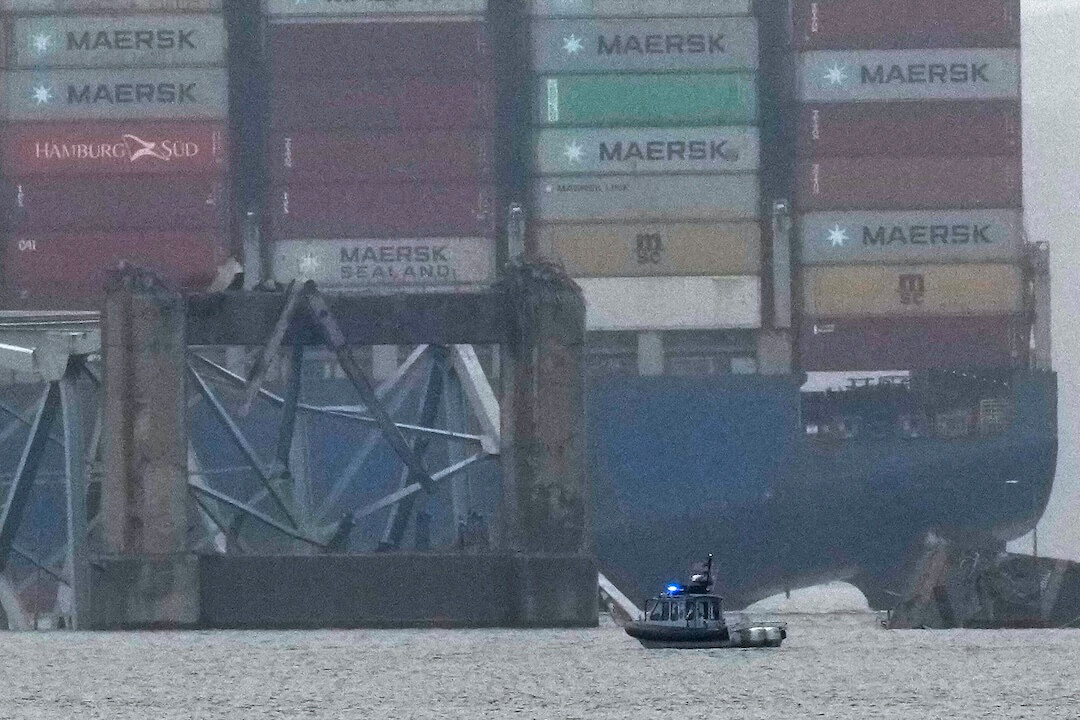Nothing gets pulses racing faster in a metro newsroom than a huge disaster story that breaks unexpectedly. That scenario played out twice early Tuesday — at the 186-year-old Baltimore Sun and the upstart 2-year-old Baltimore Banner — when a massive container ship hit the tall Key Bridge, knocking it over.
Their coverage had much in common but some marked differences too, especially in visuals. Editors of both publications told me they were scrambling all day Tuesday for the up-to-the-minute coverage that would satisfy readers, giving almost no thought to their local competitor.
Local television stations were all over the disaster coverage, too, but we chose to look at how it played out in the rare market with two full-service news sites, one a nonprofit.
Here is a story of the story:
The ship hit the bridge at about 1:30 a.m. At both newsrooms, the response was quick but not instantaneous. The first order was to wake people up. A reporter seeking to rouse top editors at one newsroom Slacked them, “Y’all are some heavy sleepers because I’ve called everyone!!”
Journalists had heard about the accident by 3 and posted their first stories before 4. By about then, teams of flood-the-zone reporters and photographers were headed to the scene.
Video was a strength of the Sun throughout the day. It was the first to post a grainy one-minute clip from the Port of Baltimore, a feed that showed the collision and then the bridge falling abruptly, that was widely used in broadcast coverage.
The Sun, now owned by Sinclair Broadcasting executive chairman David D. Smith, also benefited from video borrowed by Sinclair’s local station, Fox 45. So the Sun could show live press conferences from Gov. Wes Moore and other officials, which began mid-afternoon.
The Banner has not prioritized on-site video, editor-in-chief Kimi Yoshino conceded. At first, the Banner focused on Instagram and TikTok. “We had no template for what our new CEO Bob Cohn called a ‘World War III scenario’ — a full-span takeover of the home page.” She set a product team to work hacking the site.
The Banner made up that deficit with canny use of photos from its own photographers and other sources. The homepage was styled with a single striking image topping the coverage, with substitutions as the day went on. A particularly powerful one was posted mid-morning as readers might still be trying to figure out what happened and how. It showed the ship from a sea-level angle, highlighting its massive scale as it headed into the bridge.
I saw contrasts, too, in text treatments. I’m influenced by years of sitting next to Poynter writing expert Roy Peter Clark. From that perspective, the Banner was a model of crisp, short sentences and plain wording.
A sample Wednesday headline: “A frantic three minutes. How the ship’s pilot tried to prevent Key Bridge collapse.”
The Sun unaccountably stuck with the same lead all day Tuesday with light updates. It was a single 45-word sentence, and not an especially graceful one — a classic suitcase lead jamming in all sorts of detail:
Baltimore’s Francis Scott Key Bridge collapsed early Tuesday morning after a support column was struck by a container ship, sending at least seven cars into the Patapsco River, launching a search-and-rescue operation and prompting Gov. Wes Moore to declare a state of emergency.
Writing style points were not the point, however.
“The Sun has long been the best in my opinion when it comes to breaking local news,” editor-in-chief Trif Alatzas emailed me. “We take great pride that people from this region and around the world relied on The Sun for information about this catastrophic event given our long track record in covering this community with fairness, accuracy and urgency.”
Without providing exact numbers, he said that the Sun hit new records Tuesday for both online and print traffic. There were similar results at the digital-only Banner, Yoshino said, and it “was one of our top 10 days for new subscriber starts.”
To my eyes, the story hit a climactic point mid-afternoon Tuesday with the news that the boat operator had issued a timely mayday signal. That allowed authorities to block motorists from getting on the bridge and evacuate those whose vehicles were on the span already.
Yes and no, Yoshino said. “The mayday warning was definitely a dramatic point in the day. It underscored that while tragic, the human toll could have been much higher. I wouldn’t say that the action shifted then to impacts and safety; we were on those other angles early.”
The pilot’s quick action has figured in subsequent tick-tock reconstructions of how the accident happened, national as well as local.
And national newspapers were not inconsequential. The Washington Post and USA Today are both a short drive to Baltimore and dispatched their own teams. USA Today had early and particularly good maps and other graphics.
“National outlets with deeply-sourced reporters were a … concern,” Yoshino said. “Some of those outlets had overnight desks or breaking news reporters ready to file from London and beyond.”
My former editor and mentor Gene Roberts, from the glory days of The Philadelphia Inquirer in the 1970s and 80s, believed in fire drills for his editors — not only planning on how to handle the worst that could happen in the coverage area, and not just writing it out, but role-playing. That came in handy when the Three-Mile Island disaster hit.
It’s good practice but not all that necessary, the two editors said, with experienced reporters who work fast and track secondary and next-day stories by instinct.
An editor friend from her last posting at the Los Angeles Times wrote Yoshino in all caps: “EMPTY THE NEWSROOM!!!”
“I was already doing that,” she said. “I’m a big believer in throwing everyone on a big story when it’s merited.”







